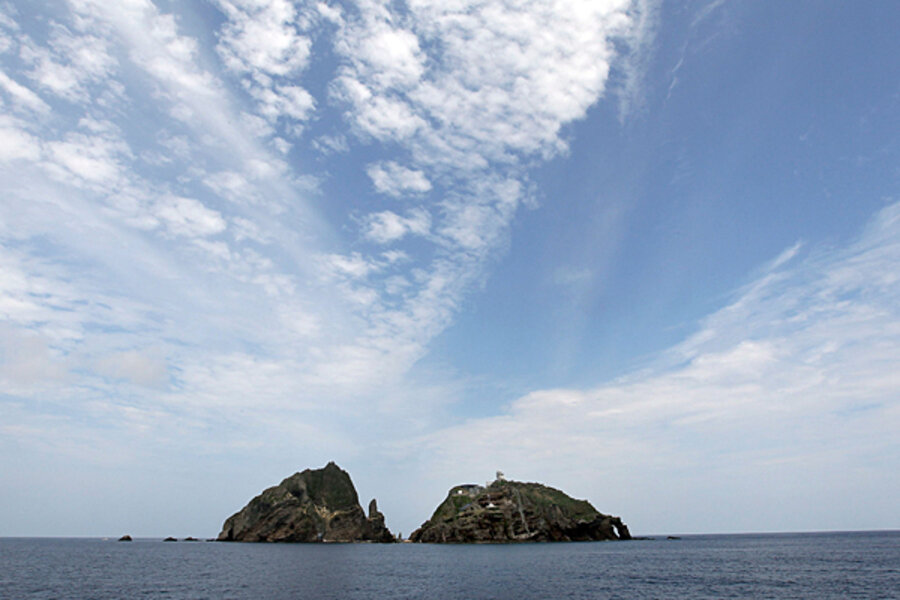Whose Islands are they? South Korea tries branding in its dispute with Japan
Loading...
When it comes to some disputed islets located in the Sea of Japan, South Korea is not shy about making its claim.
Though the Japanese refer to island group as Takeshima and remain in a bitter dispute over the issue, Koreans are adamant that Dokdo is Korean sovereign territory – and they are very committed to letting the rest of the world know.
The latest ploy: a Napa Valley wine produced by Korean-American dentist Ahn Jae-hyun at his Dokdo Winery that uses the island post code as its moniker.
Illustrating the fervor with which such attempts to garner attention for Korea’s sovereign claims over the outcrop, when the wine debuted on the Korean market the local distributor pledged to donate all proceeds to nonprofit groups promoting Korean sovereign claims in other countries.
While both Korea and Japan point to historical documents to back up their respective claims, South Korea has occupied Dokdo/Takeshima for more than half a century. And it remains a key rallying symbol for lingering resentment over Japan's colonial occupation of the then unified Korean Peninsula in the first half of the 20th century.
Previous efforts to highlight Korea’s territorial claims to Dokdo/Takeshima range from what some observers view as the practical to the more extreme.
In 2010, the Korean singer Kim Jang-hoon was behind a months-long video advertisement in New York's Times Square that not only specifically proclaimed Dokdo as Korean territory but also made sure to refer to the sea in which they are located the East Sea, as opposed to the Sea of Japan.
In recent years, a series of ads taken out in major American newspapers announced a near identical message. The latest, placed as a full-page ad in The New York Times in March by Dokdo campaigner Seo Kyoung-duk and South Korean e-commerce firm Gmarket displayed the national flags of four countries – including the South Korean Taegukgi – alongside the names of four islands related to each.
In the case of the other three countries, a line connects each island with the relevant national flag – except that of South Korea and Dokdo. Readers were encouraged to connect the two, the implication being that Dokdo is Korean territory. Japan protested the ad.
In 2008, the president of the Korean Dry Cleaners Association in the US produced plastic bags emblazoned with a picture and a map of the disputed island along with the English slogans “Dokdo Island is Korean territory” and “The Japanese government must acknowledge this fact,” which were taken up by about 100 Korean dry cleaners in New York.
And the Korea Times, a leading South Korean English-language newspaper, has for several years run an international Dokdo-themed essay competition in conjunction with the Seoul-based Northeast Asian History Foundation that invariably challenges entrants to tip their hat toward Korea’s claims to the outcrop. The winner receives a $1,270 cash prize.
Still, despite the stated intentions of Dokdo wine producer Ahn and others like him, his website gently hints at what could be seen as the futility of the territorial dispute.
Without any apparent irony, it states: “For as long as we can remember, there has been much controversy over the island and the ownership of it. Instead of appreciating the beauty of Dokdo, the world has been too busy fighting over it.”







